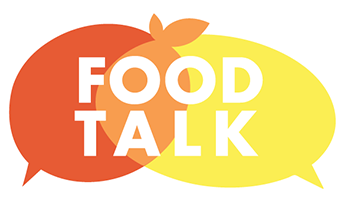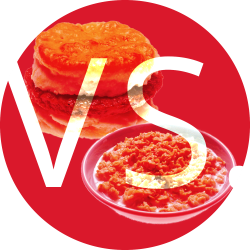People make thousands of food choices every day. These choices can be between choosing oatmeal or a sausage biscuit for breakfast, eating out instead of cooking at home, or even putting creamer in your coffee or having it black.
Many of the food choices that we make are done automatically without much thought, but the reasons can be found easily.
Top Reasons for Choosing Foods
#1 – Taste
Taste is one of the biggest factors in food choice. We all want to eat what we think tastes good, right? Let’s look at how taste affects our food choice:
- How food tastes is affected by more than just our tongues! In addition to the sensations on our taste buds (sweet, salty, etc.) taste can also be affected by how food smells, looks, and the texture of the food.
- Some taste preferences develop when people are young and may change with age. Young people tend to like sweet foods and dislike bitter foods.
- Tastes can change over time and especially with repeated exposure. The first time you try a food it may not taste very good, but trying a food at least 5-10 times may help you adapt to a new flavor. Repeated exposure is a good way to get children to try new fruits and vegetables.
- Try new ways to prepare the same foods. Cooking methods and different spices can give new variety to dishes and inspire you to try new foods!
#2 – Cost
Cost is a big factor in what foods we choose to eat. Sometimes it may seem like healthy foods are out of our budget, but there are ways that you can save money and eat healthy too!
Tips for saving money on groceries
- Check the local newspaper, online websites, and at the store for sales and coupons.
- Buying fruits and vegetables in season can lower cost and add to the freshness of your diet.
- Plan meals like stews, casseroles, or stir-fries that stretch expensive food items into more portions.
- Compare brands for the same taste, but a lower price. Store brands can often be cheaper than name brand foods.
- Stick to your shopping list to prevent overspending on last-minute purchases.
Check here for more tips and resources on how to eat healthy on a budget.
#3 – Hunger
Hunger is the natural urge we feel to eat. Controlling hunger is an important part of maintaining a healthy weight and good nutrition.
- How hungry we are can determine what we eat, when we eat, how much we eat, and even how much food we buy.
- Foods that have a higher nutrient density (healthy foods) can help us feel full and satisfied faster than unhealthy foods. Try eating foods that have many nutrients, including fiber and protein to help you feel full faster.
- Fatty foods have the lowest ability to make us feel full. This means that we have to eat more of those foods to feel satisfied, and in the process, we may end up eating more than we wanted to and gain weight.
- Being hungry may make us choose foods that we don’t even like just because they are quick and easy! Pay attention to your hunger cues so you can eat something tasty and healthy even if it may take a little more time to prepare.
Bonus tip: Go to the grocery store when you’re full! People who shop at the grocery store when they are hungry tend to buy more high-calorie foods. Eat a snack before going to the store, and stick to your shopping list.
#4 – Convenience
At times life can be busy. Between working, going to school, and taking care of children it can seem like there aren’t enough hours in the day to cook at home. Grabbing a meal on the go may be quick and simple, but the costs can be greater than cooking at home and there can be a lot of added calories that you wouldn’t put in your home cooking. Here are some tips that can add convenience to your life, without adding hidden costs or calories.
Tips to Speed up Meal Planning Times
- Create a weekly menu at the beginning of the week. It will make grocery shopping faster and takes the guesswork out of what you will cook during the week.
- Food preparation: If you don’t feel like chopping up foods right after work, dedicate one day to food preparation. Chop up any vegetables and portion out ingredients you may need for your recipes ahead of time.
- Get help in the kitchen! If you have children or others in the house, you can cook as a family to get many tasks done in half the time. Have children wash vegetables or stir ingredients together. Cooking together can increase family bonding while decreasing time spent cooking.
- Find recipes with short preparation times. Often, recipes will have the estimated time of preparation work for your convenience. If you don’t have much time to prepare, find a shorter recipe.
- Finding slow cooker or Crock-pot recipes allow you to cook food even while you’re away from the home. Prepare the first steps of the recipe in the morning, and by dinner time, the meal is complete!
#5 -Nutrition
Though we choose recipes for a variety of reasons, nutrition is an important factor to consider. Good nutrition habits can reduce symptoms of diabetes and heart disease, and help prevent other diseases. How to find and cook nutritious foods may be confusing, so here are a few tips to help you eat healthier.
Tips for Eating Healthier
- Try new methods of cooking. Instead of frying a food or having a high fat sauce try baking, broiling, sautéing, or another low-fat cooking method.
- Make a goal. Have goals to help you eat healthier. Start off small by adding a serving of fruit or vegetables to a meal, and go on from there.
- Read the food label! The Nutrition Facts label on the back of most food products can tell you a lot about your foods. Check out Nutrition Facts Label to learn more.
- Do research. Many popular restaurants and fast food chains will have the nutrition information listed on their websites, and sometimes on their menu. Try choosing something from the healthier section of their menu, and compare the calories, fat, sodium, and sugar of other foods.
- Use good sources of nutrition information. Visit MyPlate’s website as a good starting point to find out more information about your food and the things good food does for your body.
Other Reasons for Choosing Foods
Attitudes, Beliefs, and Knowledge About Food
Sometimes people choose foods because of what they like, dislike, or know (or don’t know) about foods. If you have a negative attitude or belief about a healthy food, think about the reasons why. Is it because it was cooked improperly the one time you tried it? Have you never tried a food because of its look or what other people have said about it? The best way to overcome these barriers to healthy eating is to try new foods, try them multiple times to allow your tastes to change, and to prepare foods in different ways that can improve the taste (while still being healthy).
Availability and Accessibility of Food
Sometimes eating healthy is difficult because of where we live and when we get food but it is not impossible. Search the stores closest to you for healthy options when available, use resources in the community that aid with accessing foods, and communicate with those around you (family and peers) to make a shopping plan.
Social Norms—Culture, Family and Peer Influences
We often eat certain ways because we want to fit in with the people around us. The region that we grew up in may affect the types of foods that we like to eat. Other foods may be eaten because of family traditions and social gatherings. Sometimes we eat things just because our friends have ordered something and it looks appealing to us. Staying healthy doesn’t mean that you have to give all of these things up—try keeping a balance of your social customs and eating healthy. Altering traditional recipes to be healthier is a great way to achieve this balance!
How You Feel—Mood, Stress, and Guilt
Eating certain foods can be related to how we feel. When we are in a bad mood, stressed out, or guilty, we may choose unhealthy food to help us feel better. Unfortunately, this can cause weight gain and health issues. Instead of turning to unhealthy foods, try an activity that can give some stress relief—talking with others, exercise, meditation, or healthy snacking (eating well has been associated with a better mood!).
Advertising
Companies spend millions of dollars on food advertisement every year to convince you to try a certain food. Many of these advertisements are for unhealthy foods so be careful about how much these advertisements can influence you.
Posted March 30th, 2015


